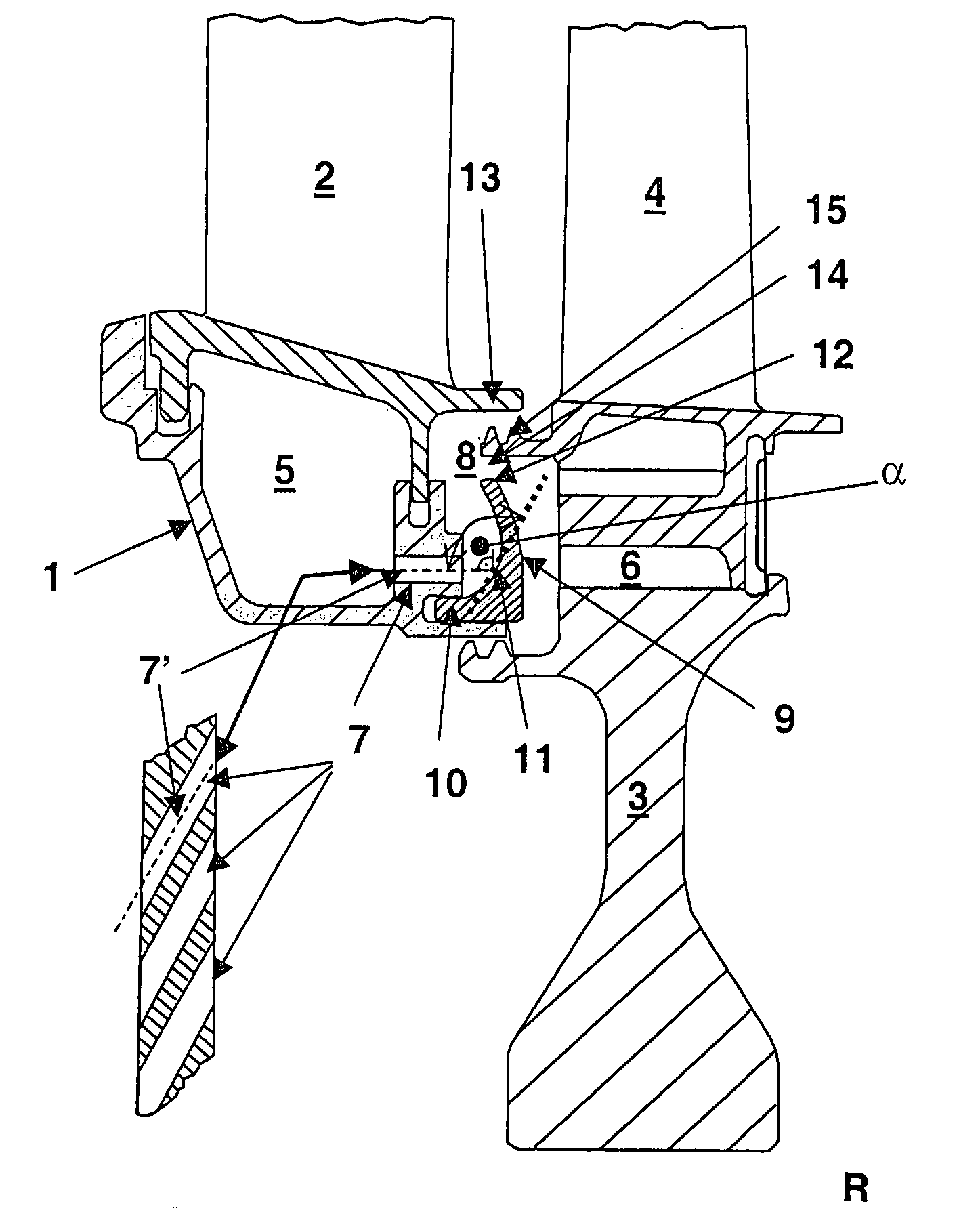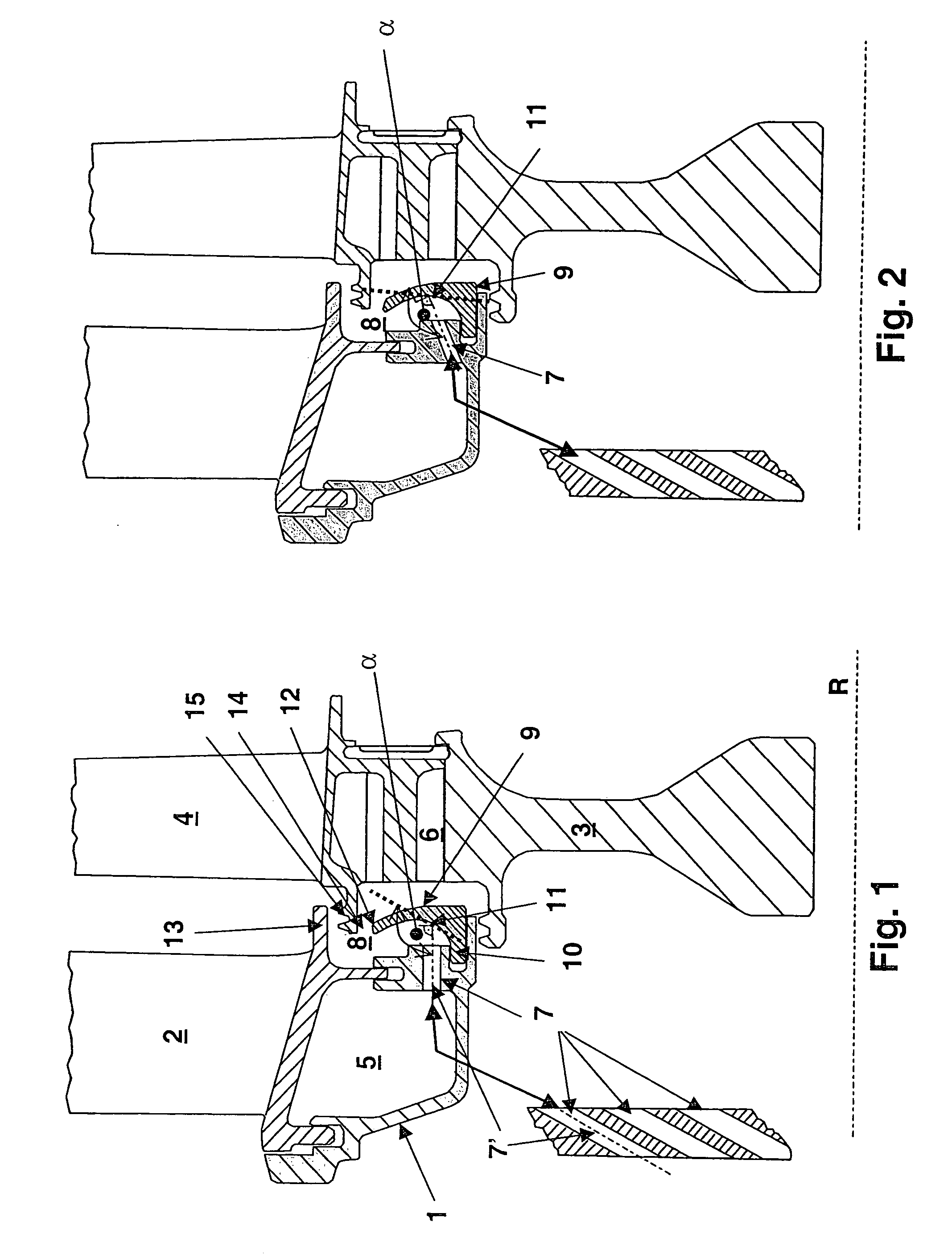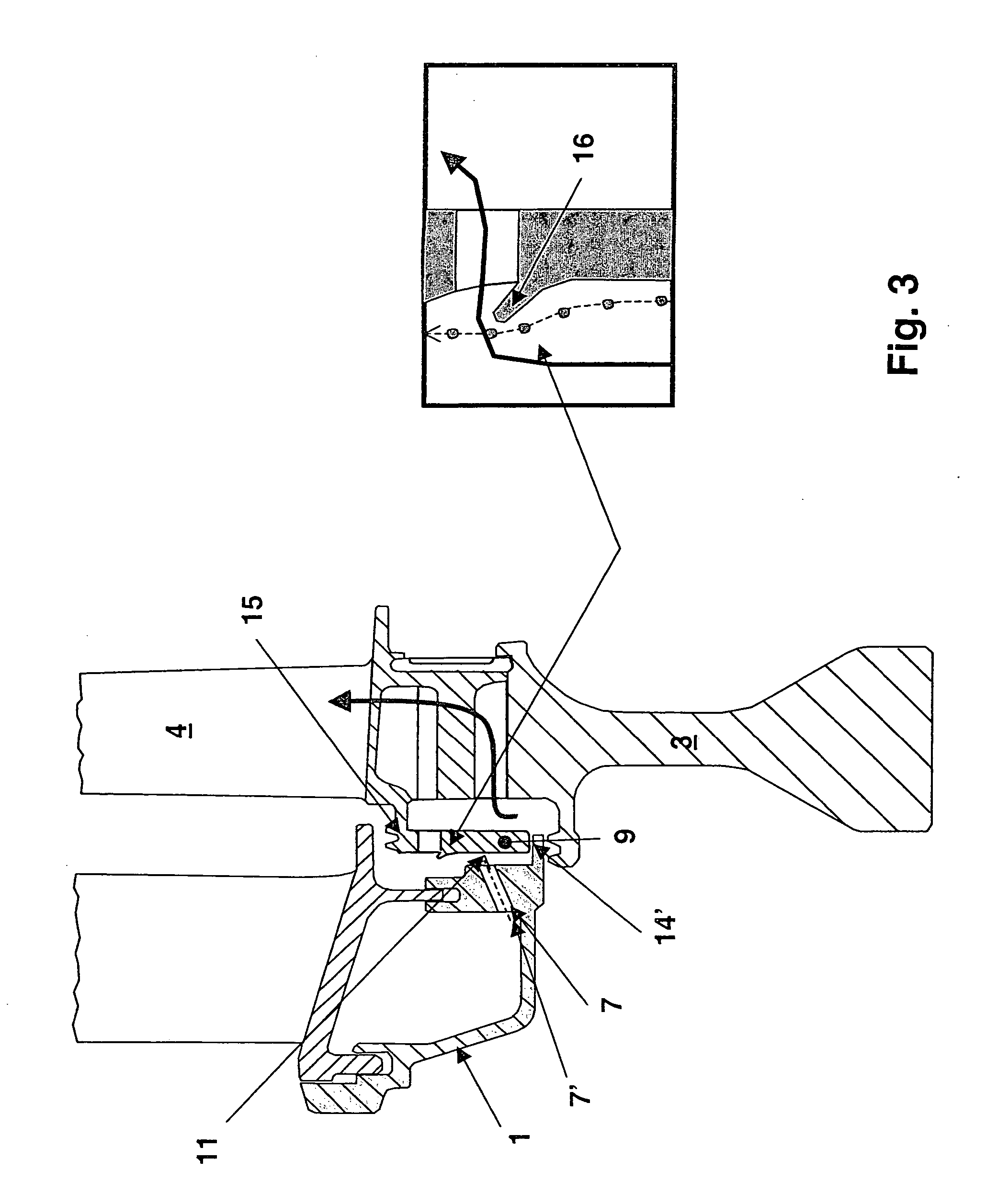Device for separating foreign particles out of the cooling air that can be fed to the rotor blades of a turbine
a technology of cooling air and foreign particles, which is applied in the direction of machines/engines, mechanical equipment, liquid fuel engines, etc., can solve the problems of radially inward directed cooling air stream entanglement of lightweight and smaller dust or foreign particles for further cooling of the turbine rotor blade, and the risk of contamination, so as to improve the separation effect and boost the effect of separation
- Summary
- Abstract
- Description
- Claims
- Application Information
AI Technical Summary
Benefits of technology
Problems solved by technology
Method used
Image
Examples
Embodiment Construction
[0029]FIG. 1 shows a longitudinal section through a turbine stator 1 having a guide vane 2 that is fixedly connected thereto and a wheel disk 3, which is arranged such that it can rotate about the rotor axis R and has a turbine rotor blade 4 secured to it. Cooling air which is mixed with foreign particles, for example dust particles, passes from a compression unit (not shown) into a volume 5 enclosed between guide vane 2 and turbine stator 1. Specifically, the cooling air supplied by the compression unit is to be separated from the foreign particles, and the cleaned cooling air is to be passed, for further cooling of the rotor blade 4, into the cooling ducts 6 provided accordingly for this purpose within the wheel disk 3, which are connected to a hollow-chamber system provided accordingly for cooling purposes within the rotor blade 4.
[0030] To separate the foreign particles out of the cooling air fed by the compression unit, the cooling air passes out of the volume 5, via nozzle un...
PUM
 Login to View More
Login to View More Abstract
Description
Claims
Application Information
 Login to View More
Login to View More - R&D
- Intellectual Property
- Life Sciences
- Materials
- Tech Scout
- Unparalleled Data Quality
- Higher Quality Content
- 60% Fewer Hallucinations
Browse by: Latest US Patents, China's latest patents, Technical Efficacy Thesaurus, Application Domain, Technology Topic, Popular Technical Reports.
© 2025 PatSnap. All rights reserved.Legal|Privacy policy|Modern Slavery Act Transparency Statement|Sitemap|About US| Contact US: help@patsnap.com



